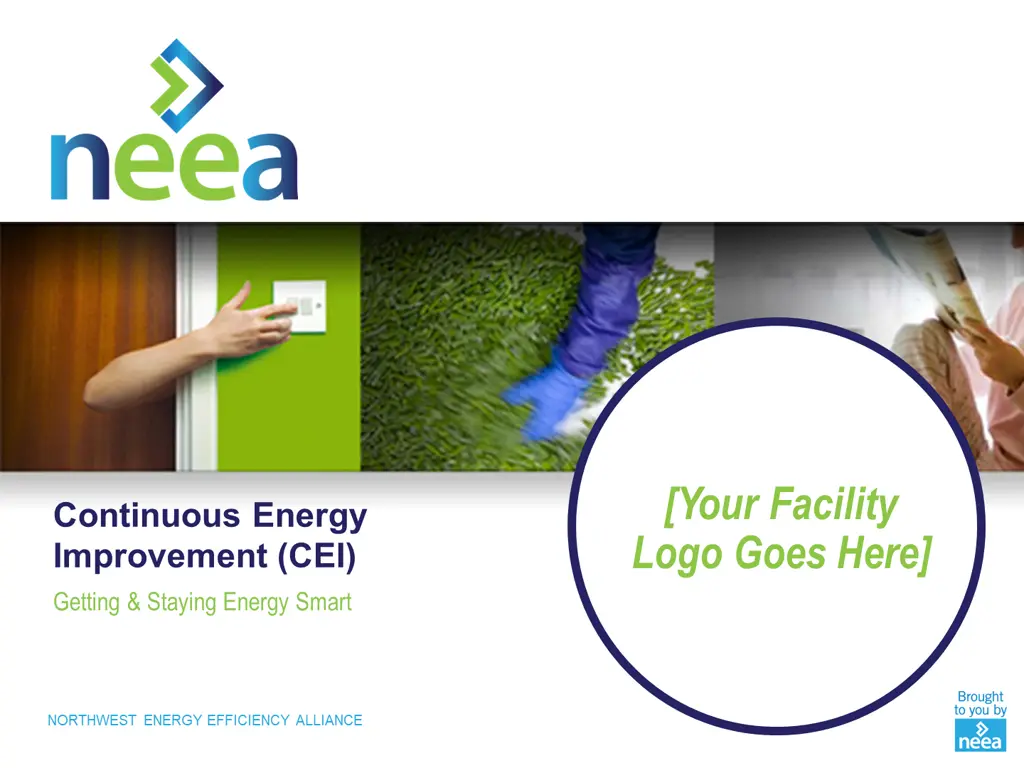Continuous Energy Improvement (CEI)
How to improve energy efficiency in your facility and stay energy smart with Continuous Energy Improvement (CEI) strategies.
Download Presentation

Please find below an Image/Link to download the presentation.
The content on the website is provided AS IS for your information and personal use only. It may not be sold, licensed, or shared on other websites without obtaining consent from the author.If you encounter any issues during the download, it is possible that the publisher has removed the file from their server.
You are allowed to download the files provided on this website for personal or commercial use, subject to the condition that they are used lawfully. All files are the property of their respective owners.
The content on the website is provided AS IS for your information and personal use only. It may not be sold, licensed, or shared on other websites without obtaining consent from the author.
E N D
Presentation Transcript
[Your Facility Logo Goes Here] Continuous Energy Improvement (CEI) Getting & Staying Energy Smart NORTHWEST ENERGY EFFICIENCY ALLIANCE
Lets Start with a Pop TESTING YOUR ENERGY IQ
True or False? Q: Beer was one of the first beverages ever refrigerated. A: True. In 1894, German inventor Carl von Linde installed one of the first-ever commercial refrigeration units at the Guinness Brewery in Dublin, Ireland. Q: The electric motor was invented in 1900. A: False. Michael Farraday invented the electric motor in 1831. Q: The average motor life is approximately five years. A: Maybe, but with care, motors can last up to eight years before they have to be replaced.
True or false: Saving energy costs money.
FALSE. Saving energy can be free and easy. We can change our habits to: look for opportunities to conserve energy be more energy efficient
Why is it important that we practice energy efficiency in our facility?
When we manage energy efficiently, we benefit by: Saving money which adds value to our bottom line which keeps us competitive in our market.
Test your systems smarts.
What are three important systems that use A LOT of energy?
- Compressed air - Boilers (steam) - Motors/drives/hydraulics - Lighting - Space heating/cooling - Refrigeration - Pumps
What is the most significant cost of owning a motor?
Electricity. Though it has no up- front cost, electricity can account for as much as 98% of a motor s eight-year cost.
What are the four utilities used in this facility?
Electricity, gas, water and compressed air.
What percentage of total compressed air produced is leaked air?
What do you think our facility s total annual energy costs will be this year?
Energy Efficiency: Use Less and Get More If we save [xx]% of our total annual energy costs next year, we could increase our profitability by $[xx] The money we save as a result of energy efficiency can be reinvested in: Technology improvements in our facility Marketing and sales activities for our products Production line efficiencies, which ultimately helps you do your job better
Our Energy Reduction Goal [Fill in your reduction goal here]
A Key Tool in Our Toolbox Production Quality [Insert facility photo here] Safety Energy
What is CEI? CEI is a strategic energy management system with many benefits: CEI helps us manage energy as a controllable expense CEI gets all of us working together to reduce energy use CEI improves our energy productivity CEI increases payback on energy-related capital improvements CEI reduces O&M expenses CEI complements our existing continuous improvement programs CEI gives us a competitive advantage at the point of production
A Practical Path: Save Energy & Money HOW DOES IT WORK? Continuous Energy Improvement (CEI) is a systematic approach to embed energy best practices into business operations. 1. The CEI tutorials and tools work across Organizational Structure, People, Manufacturing Systems, and Metrics. 2. The systematic approach connects process elements throughout the business. 3. Interconnected business practices and principles build a self-sustaining management system step-by-step.
Plan Do Check Act Cycle Form an energy policy Get and record data Set and achieve goals Form an energy team Create awareness & support Perform an energy audit Find help or hire pro s Choose performance indicators Translate data into performance Monitor, target, & report Estimate costs Choose best energy projects Improve through O & M
Getting to our Goal Support from leadership A written energy policy that includes: [Add details here] Endorsed cross-functional energy team [Add details here]
Getting to our Goal Awareness and training [Add details here] Maintanence and operations [Add details here]
Getting to our Goal Review of facility performance and opportunities [Add details here]
Getting to our Goal Reporting, feedback, control systems [Add details here]
Getting & Staying Energy Smart [energy Led by our energy champion Supported by our energy team Involves energy assessments, employee feedback, and training Supported by our local utility champion photo goes here] [energy team photo goes here] [utility logo goes here]
Staying on Track: The 4th Question 1. Did we have any accidents? 2. Did we spill anything? 3. How much product did we make? 4. How much energy did we use to get it done?
Quiz to Close! Here s one more chance to test your energy trivia smarts . . . Q: What is the cost of the United States energy use per minute? A: The United States uses nearly a million dollars worth each minute, 24 hours a day, every day of the year. Q: Which uses more energy, a hand razor or an electric razor? A: A hand razor at a sink (because of the water power, the water pump, and so on) Q: What percentage of household energy do appliances use? A: Appliances use about 20% of a typical household s energy.






































